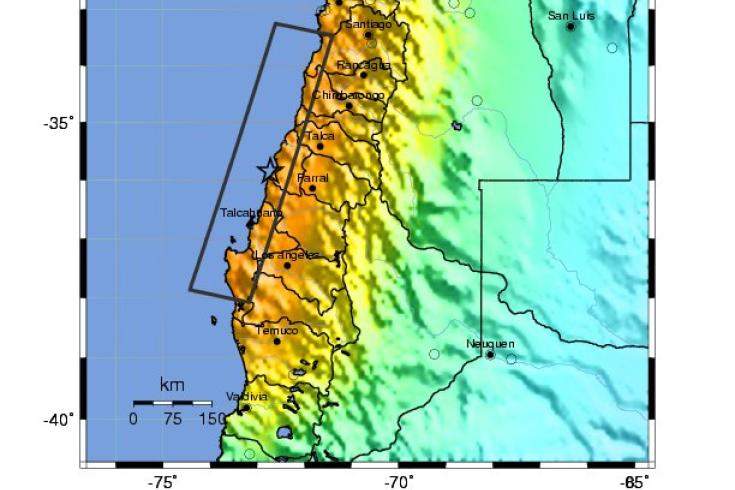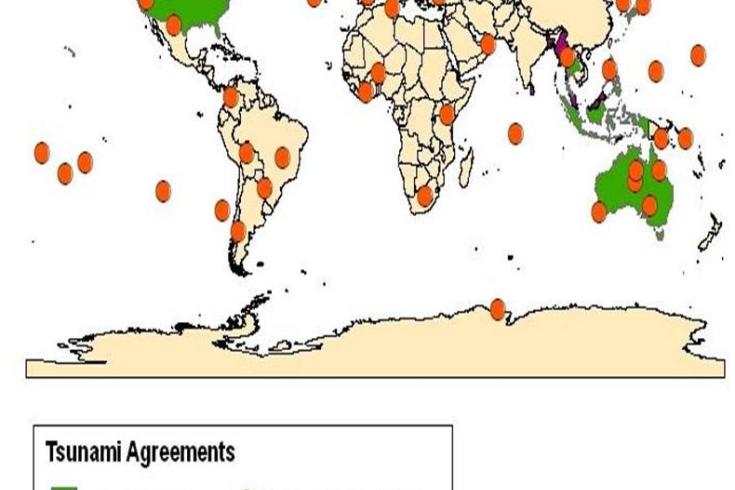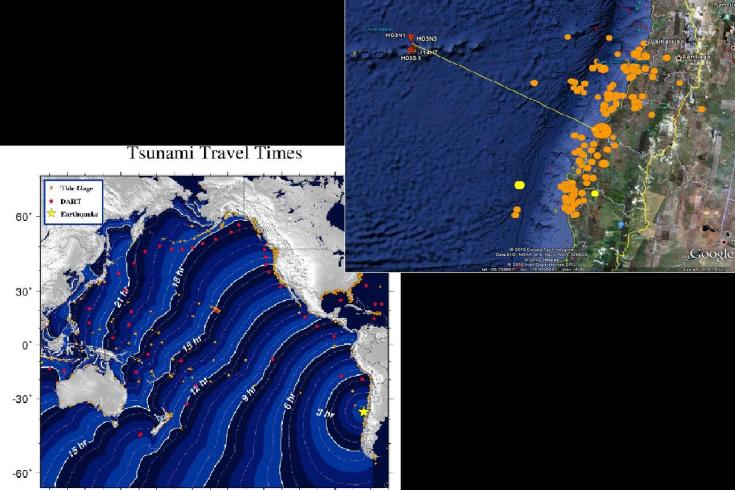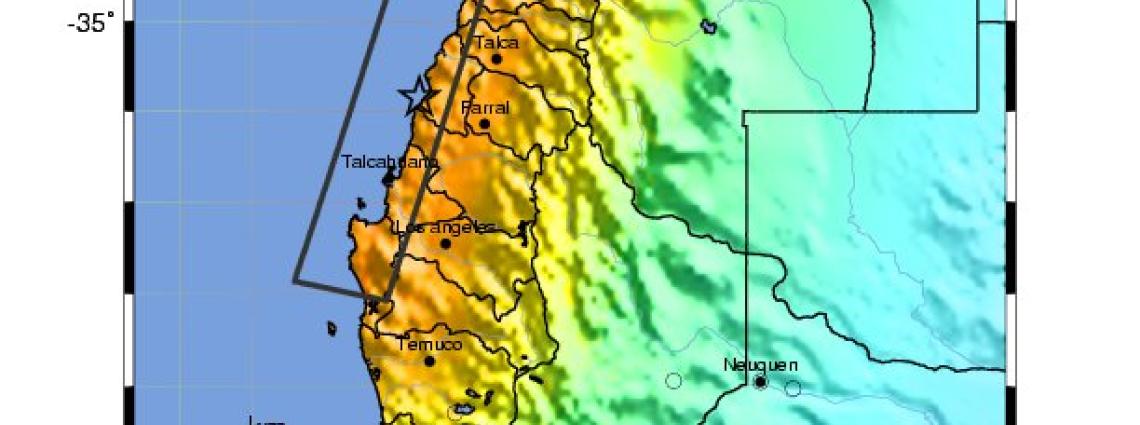CTBTO contributes to tsunami warning following the earthquake in Chile

Shake map of the United States Geological Survey.

Stations transmitting data to tsunami warning centres around the globe.
Six hundred kilometere away from the earthquake’s epicenter, the ground station collecting the information from the sensors on and around the island is located directly on the shore. “After my colleagues received a picture with the devastated coast, and learned that many people had been killed, they were frantically trying to get hold of our local station operator,” said Mark. “It was Monday when we finally knew he was ok.” The ground station was nevertheless destroyed and it remains uncertain what damage the multiple sensors suffered.
Close-up of buildings near the pier (left), and a picture taken after the disaster in the vicinity of the station location.
The data produced by this network have a number of other possible uses. These include tsunami warning, but also research on the Earth’s core, monitoring of earthquakes and volcanoes, climate change research, atmospheric monitoring and biological research.

The closest International Monitoring System hydroacoustic station is located approximately 600 km from the event. The U.S. National Oceanic and Atmospheric Administration estimated that it would take the tsunami one hour to reach that distance.
“It's a key point to remember that we cannot under-warn. We cannot have a situation that we thought was no problem and then it's devastating. That just cannot happen,” Dai Lin Wang, an oceanographer at the Pacific Tsunami Warning Center in Hawaii, told the Associated Press. “We learned that we are ready to deal with these situations,” Honolulu Emergency Management Department spokesman, John Cummings, told a press conference. “We at the CTBTO are happy that we can contribute to disaster mitigation,” said Tibor Tóth, the Executive Secretary of the CTBTO. “The tragedy in Chile is another reminder of the relevance of our investment.”
The ground station serving the various sensors is located on the shore in the region indicated on the map of Robinson Crusoe, one of the volcanic Juan Fernández Islands. The hydroacoustic sensors are in the water 25 km north of the station, and the infrasound sensors are located southeast, 300 to 400 metres above sea level.
5 Mar 2010
